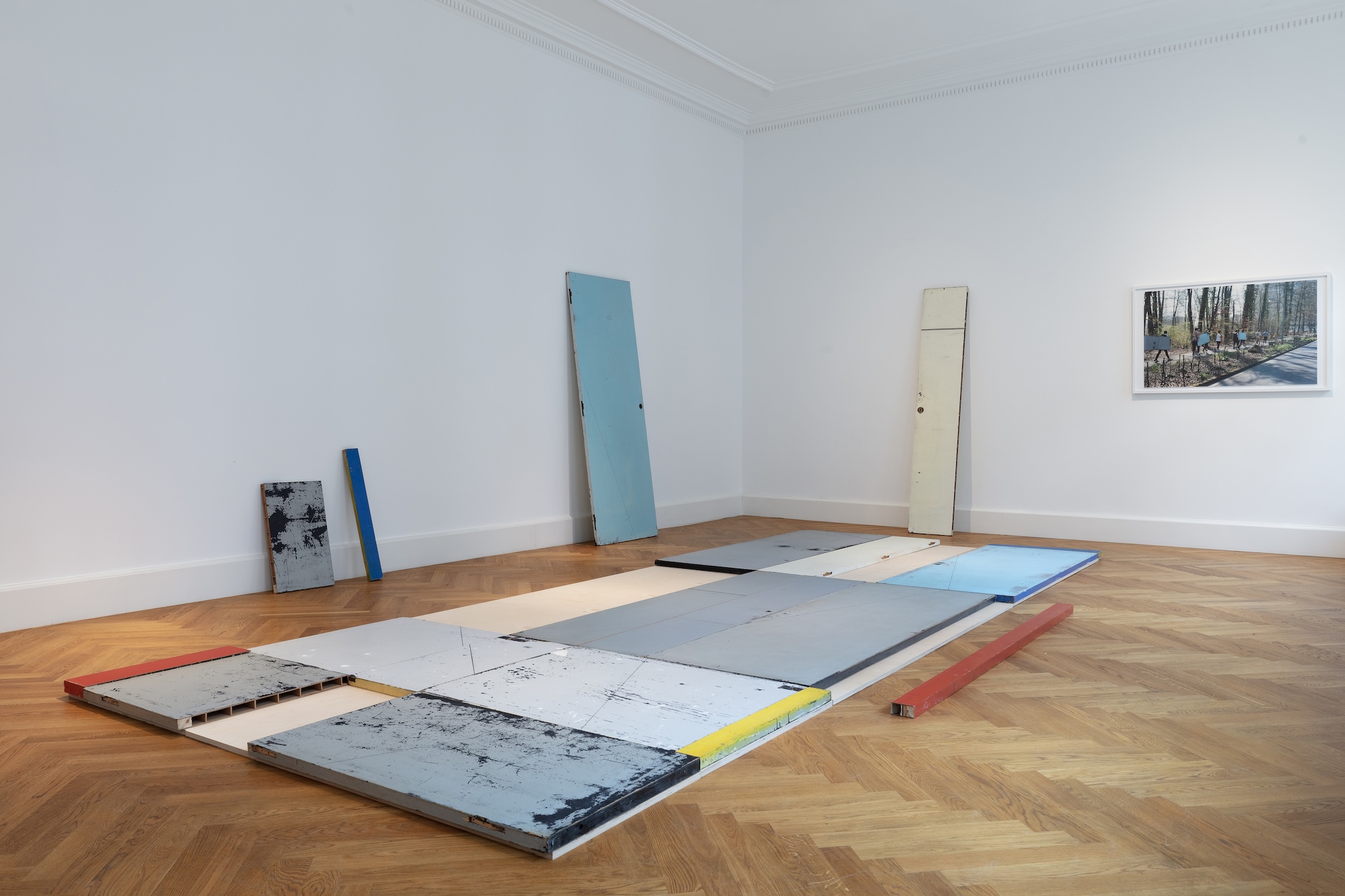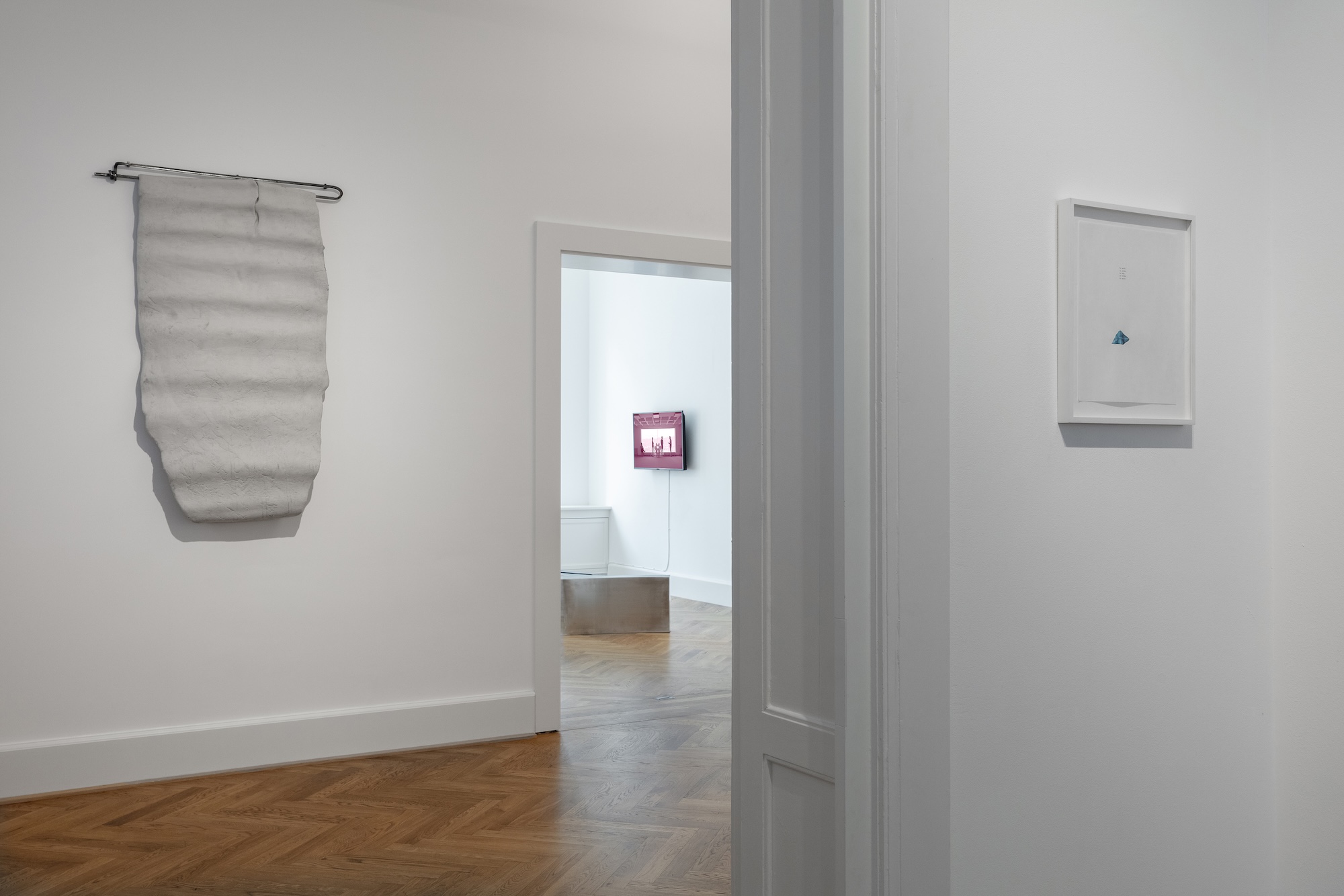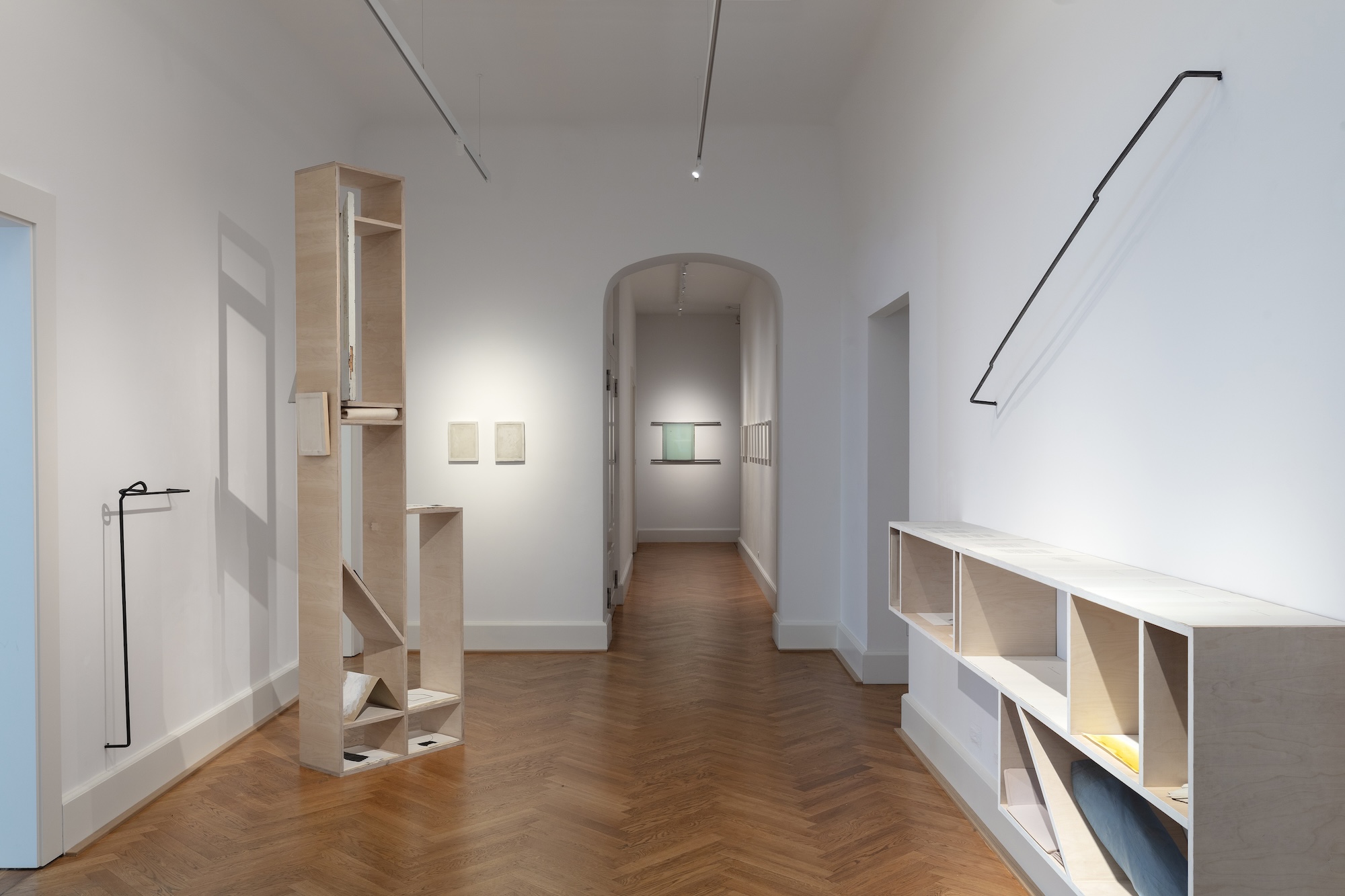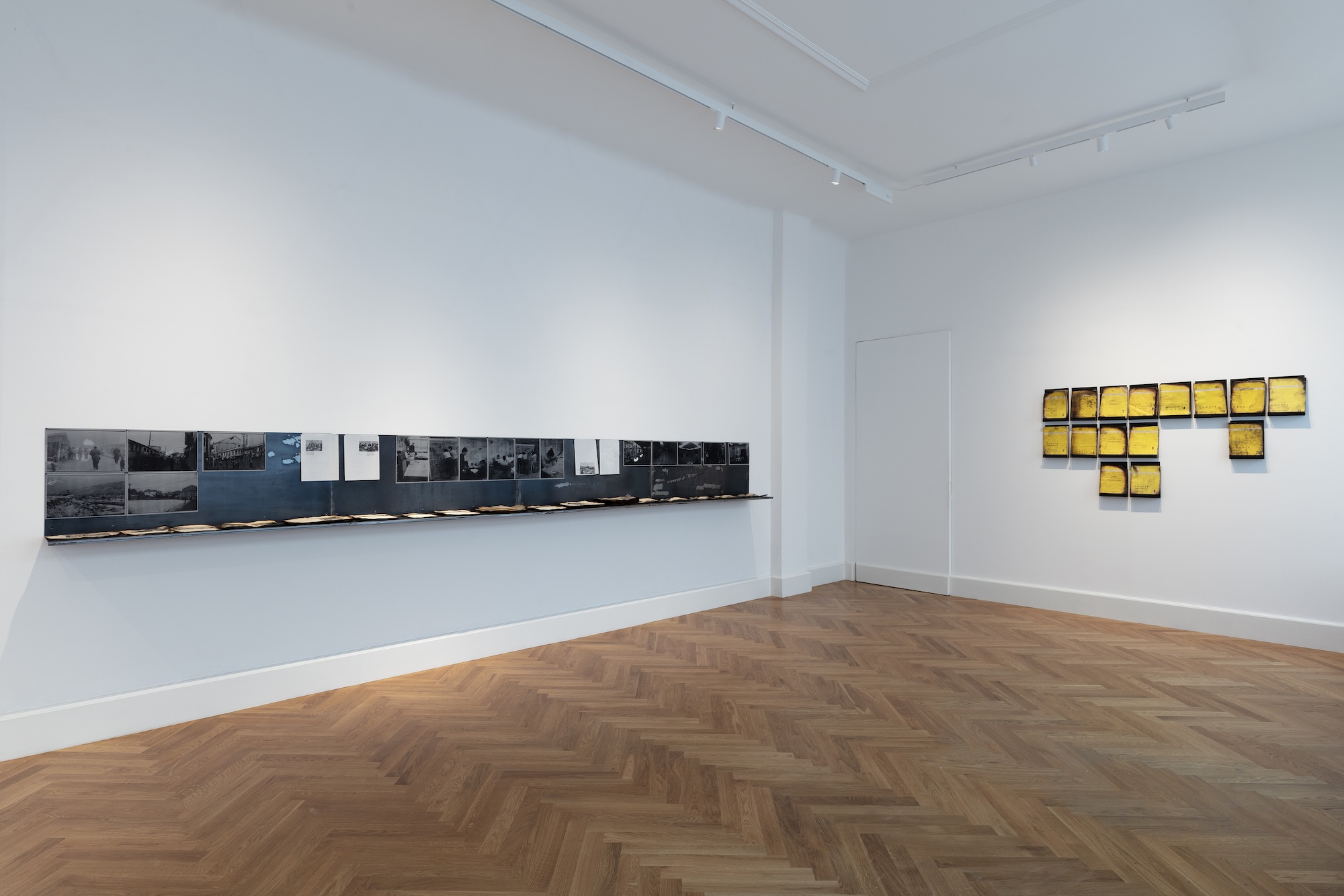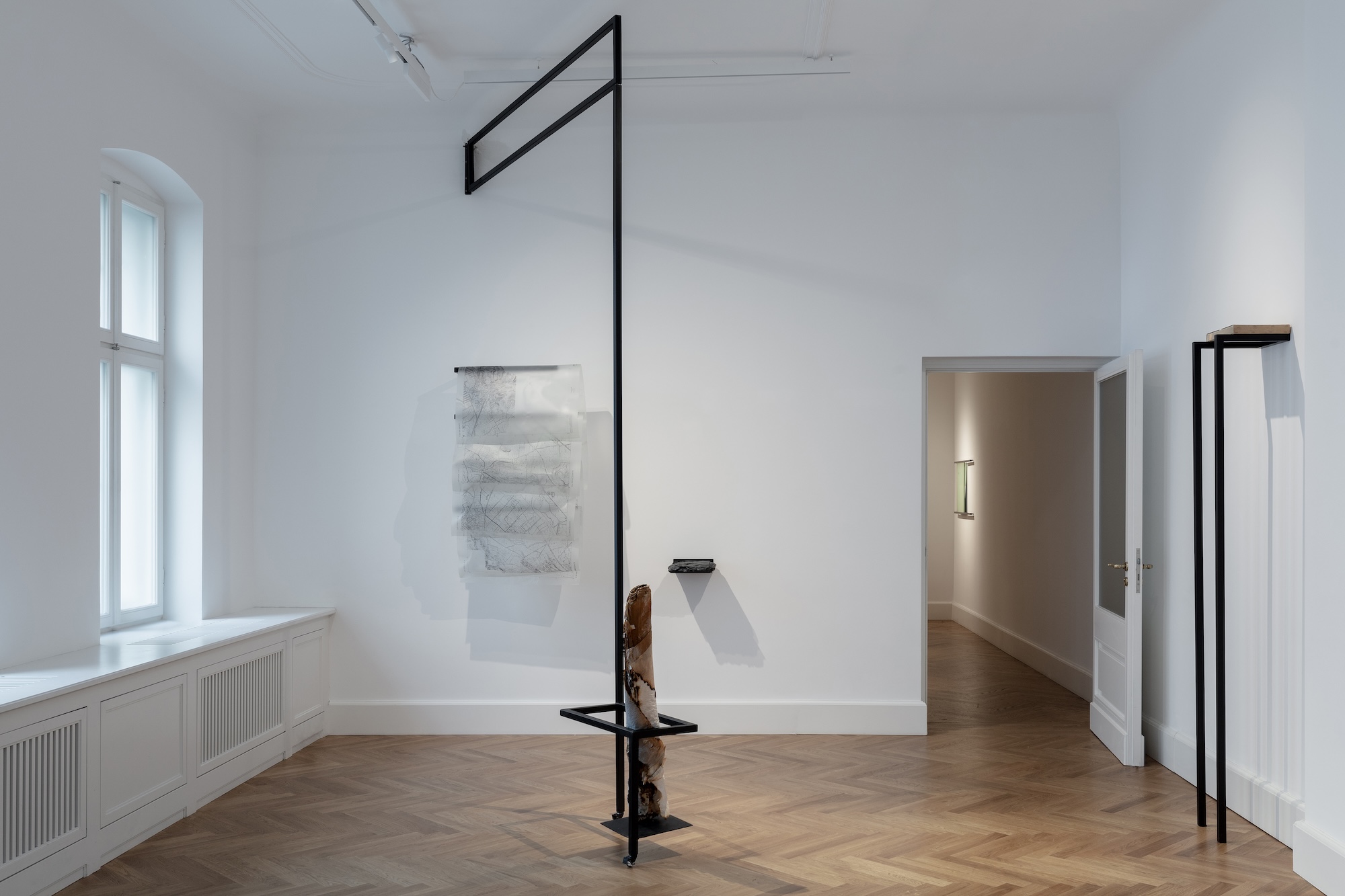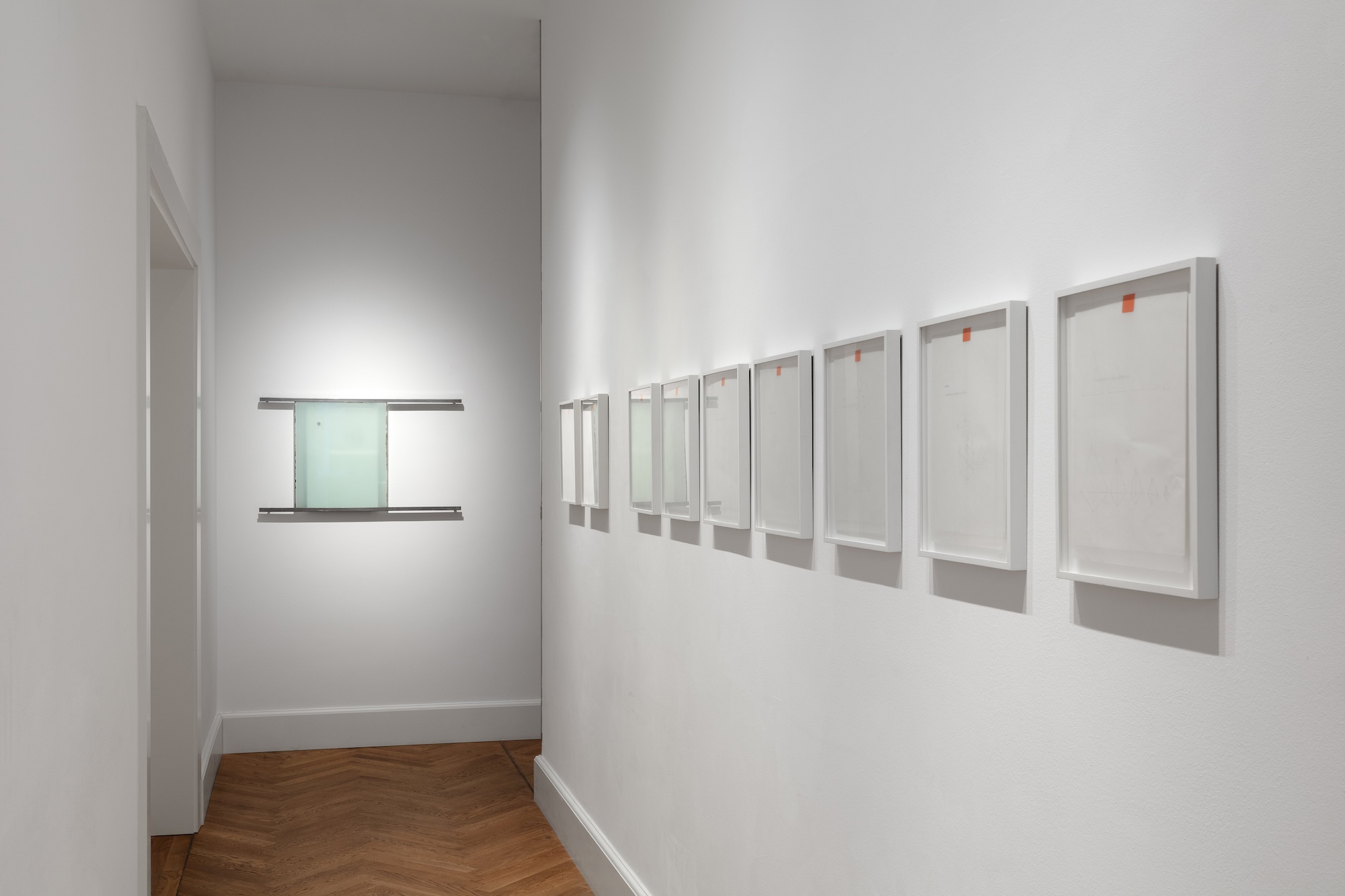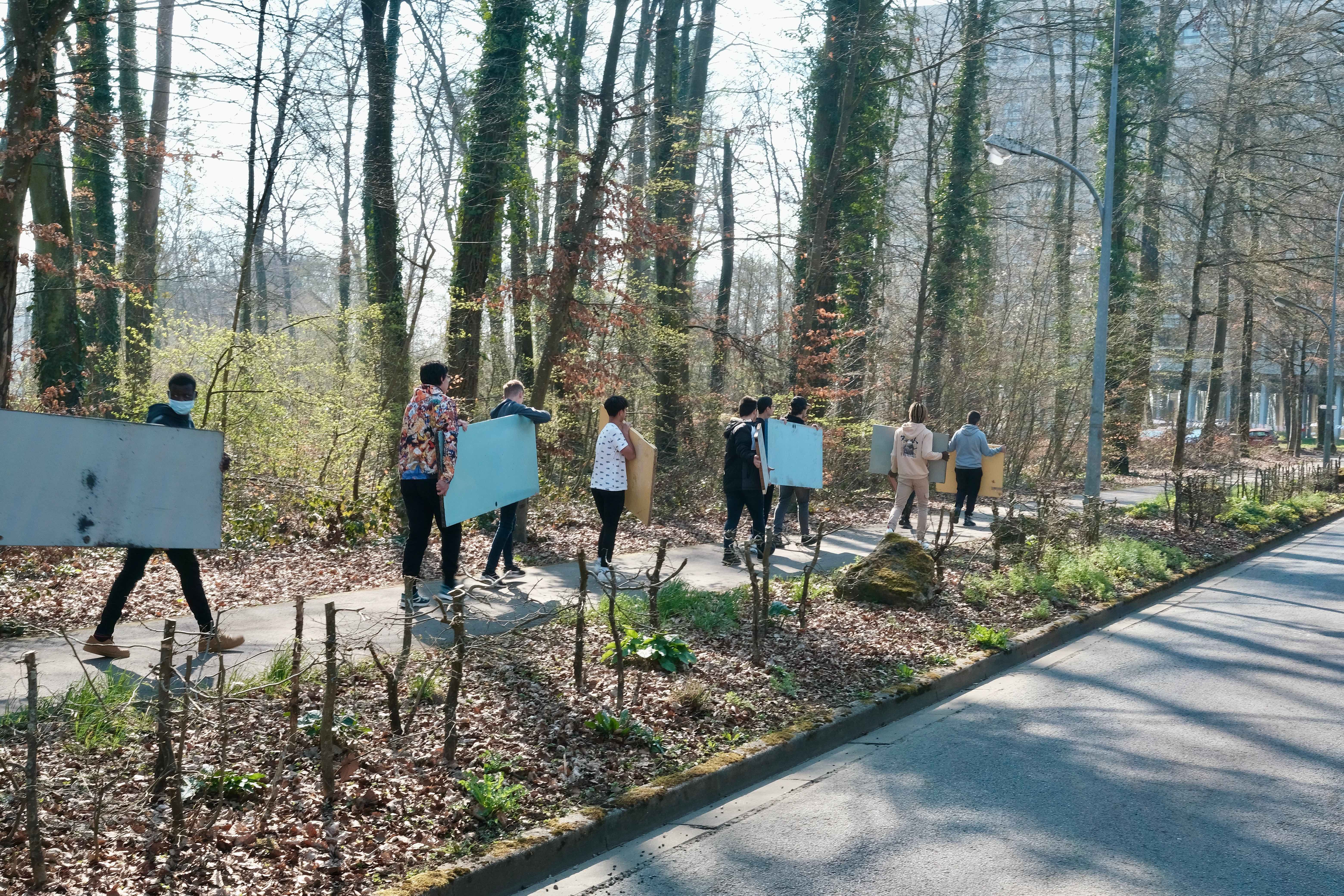Residual Entries
22/02/2024 - 28/04/2024
Yane Calovski
Residual Entries
Opening: Thursday, February 22, 6–8.30 p.m.
Zilberman | Berlin is pleased to announce the solo exhibition Residual Entries by Yane Calovski.
In his first exhibition with Zilberman, Yane Calovski brings together new and existing work stemming from research he has conducted over a period of more than ten years. The core of the exhibition includes three installations: Undisciplined Construction of an Archive; then MAKEDONIUM: Dramaturgy of the Unfinished; and Schöning Revisited: Extensions, Chroma, Inflections. The source, as well as the subject, of these installations are institutional and private archives that have provided Calovski with material for addressing the ambivalent legacy of large-scale urban planning projects carried out in the 1960s and ’70s. Calovski starts by collecting material traces that furnish him with a way of approaching his subject—thus the title of this exhibition, Residual Entries. These may be pigments, or valuable artifacts and documents, but may also include everyday objects. Calovski treats all his materials equally. At other times, the artist re-constructs what is remembered, shaping it anew or transforming it, as if he would liberate the past for re-evaluation. Quite consciously, he focuses on the physical qualities of certain working materials, such as metal, wood, paper, or rubber, and on the way his installations, comprising objects, drawings and found material, are organized in space. He also incorporates performative elements into this interplay of arrangements and juxtapositions, thus emphasizing the importance of process in his working practice.
The installation Undisciplined Construction of an Archive stems from Calovski’s reflections on his hometown of Skopje. The city was almost completely destroyed by an earthquake in 1963, and as a result it became the subject of an international city-planning competition won by the Japanese architecture firm Kenzo Tange. This new start was seen as an opportunity for Skopje to create an internationally recognized symbol of Macedonian national identity within the multi-national state of Yugoslavia. Tange’s Master Plan for creating an ideal city involved re-shaping all aspects of the city—on the societal, economic, political and cultural levels. But this plan was never realized in full; instead, the results are marked by all the discrepancies between the urban utopia sketched on the drawing board and the real needs of Skopje’s residents—to which they hoped the government would respond with practical urban planning decisions. The chasm between lofty plans and real results constitutes the starting point for Calovski’s exploration of the Archive for City-Planning and Architecture in Skopje, as well as for his reflections on the widespread optimism of modern architecture in the 1960s and ’70s—whose gestures were later often criticized as authoritarian. In 2017, the archive housing the documentation of Kenzo Tange’s master plan for Skopje as well as other large architectural projects was almost completely destroyed by fire. Calovski had begun exploring this archive in 2004, and he has devoted the most recent chapter of his research project to this very history of its destruction. He confronts excerpts from burned archival materials such as old photographs or books and maps—which in some cases can no longer be opened because in being opened they would disintegrate to ashes—with his own memories. On his motivations, Calovski says: “Every time we experience a loss of something associated with our personal but also collective history, be that a document, a building, or a person, we feel that we have lost our footing both in the present and the future. It is a disconcerting, disorienting, and ultimately debilitating experience, and it takes time to recover enough to address it with some consequence. In particular, in times of active aggression, I wanted to understand how a residual archival matter concerns itself with potentiality and re-emergence as new and specific knowledge grounded in its embodiment.”
In the installation MAKEDONIUM: Dramaturgy of the Unfinished, Calovski addresses the lesser-known history of a public monument entitled “Makedonium”. As with the master plan of Kenzo Tange, this work also involves a planned utopia and its relationship to the structures actually realized when, in the 1960s and ’70s, Socialist Macedonia erected various public monuments to commemorate the nation’s past. The monument in question, memorializing a people’s rebellions against various oppressors, was built between 1969–1974 on the basis of a design by architect Iskra Grabuloska and sculptor Jordan Grabuloski. Iskra Grabuloska, over the course of several decades, also created an archive, later gifted to the State Archive of Macedonia, in which she documented the couple’s conceptual and aesthetic intentions. Calovski developed his work in several parts—of which the most recent is exhibited in this exhibition—together with the artist Hristina Ivanoska, his partner. Both artists, however, have created distinct works from the project. The work we show here involves Calovski’s reflections on a part of the monument that was never built: a room that was meant to serve as a discursive space. While the curated, educational content foreseen by Grabuloska in that space was to reflect the spirit of the Macedonian liberation movement through the projection of films and slides, the room was also intended to catalyze self-reflection and dialogue. With this in mind, Calovski has created an object for our exhibition, which he has allocated to this unrealized room.
Calovski’s most recent project included in this exhibition is Schöning Revisited: Extensions, Chroma, Inflections. Here, he has focused on architect Pascal Schöning, who was known for his concept of “Cinematic Architecture,” an architecture that encompasses the planning, not only of buildings, but more broadly of space, events, and relationships. Calovski’s starting point for this new installation is the architect’s former apartment in the Cité Radieuse, which—together with all its furnishings, books, and other content—has been integrated on its original site into the collection of the Archive of the Avant-Garde. The Cité Radieuse, located in Briey, France, was one of five apartment projects built by Le Corbusier on the model of his Unitè d'Habitation in Marseille—another is the Wohnmaschine in Berlin. Calovski has brought from Schöning’s apartment and incorporated into his installation at Zilberman the original doors, which Schöning himself collected and used as a partition, as well as mirror and glass plates and other materials and ephemera. Calovski works with these elements, extending them, or replicating them. In this way, he picks up on the modular approach professed by Le Corbusier, while at the same time re-thinking the living, social, and organizational concepts developed first by Le Corbusier and then by Pascal Schöning.
For some years now, Yane Calovski and his family, which includes the artist Hristina Ivanoska and their son Teodor, have lived and worked commuting between Berlin and Skopje. Calovski describes this movement between two places as a dichotomy and says that it reflects the most basic of his working principles. This means embracing the modularity of his constructions, the gesture of collaboration, the shared use of resources, and a continuous search for meaningful connections, for a conversation, that leads to new and specially adapted concepts of political responsibility and creativity.
Text: Lotte Laub
Translation: Darrell Wilkins
Accompanying the exhibition, a catalogue will be published. For more inquiries, please contact berlin@zilbermangallery.com.
Yane Calovski thanks the Archiv der Avantgarden—Egidio Marzona, Association La Première Rue in Briey, and the Ministry of Culture of the Republic of North Macedonia.
Yane Calovski (b. 1973, Skopje) is an artist, researcher, and cultural activist based in Berlin and Skopje. His recent solo exhibitions include Galerie Blanche – Association La Première Rue, Briey (2022), Kunsthalle Kohta, Helsinki (2020); Museum of Contemporary Art, Skopje (2017, 2011); ZAK | BRANICKA (2016, 2011); and the Tate Britain, London (2010). Calovski and Hristina Ivanoska represented the Pavilion of North Macedonia at the 56th Venice Biennale with a collaborative installation curated by Basak Senova (2015). Exhibitions dedicated to the collaborative practice he shares with Hristina Ivanoska have been presented at the Art Encounters Foundation, Timisoara (2022), Tobacna – MGML, Ljubljana (2019), Museum of Contemporary Art Skopje (2018), Museum of Contemporary Art Zagreb (2017), and the Kunsthalle Baden-Baden (2014), to name a few. The two artists were awarded a Pollock-Krasner Foundation Grant (2018). Calovski has participated in numerous biennials, including the 39th Eva International (2022), Helsinki Photography Biennial (2014), the Jerusalem Show VII: Fractures (2014), 2nd Biennial of Contemporary Art, D-O ARK Underground (Bosnia and Herzegovina, 2013), Manifesta 7, Bolzano (2008) and Manifesta 3, Ljubljana (2000). He has exhibited comprehensive installations in numerous group exhibitions, including ICI Paris (2022), MAXXI Rome (2021), Malmö Konstmuseum, Sweden (2015); CAC Vilnius (2003); and Drawing Center, New York (1998). Calovski has created site-specific installations for Bunkier Sztuki, Krakow (2016), and the Bauhaus Foundation, Germany (2015). Calovski’s work has been acquired for many public and private collections, including the Philadelphia Museum of Art, Van Abbemuseum, Eindhoven, Deutsche Bank Collection, Frankfurt am Main, and Art Telekom Collection, Berlin. The Zorlu Center Collection published a monograph of his work entitled Yane Calovski: obje’ct, edited by Basak Senova (2012). He graduated from Pennsylvania Academy of the Fine Arts (1996) and Bennington College (1997). Calovski attended studio programs in CCA Kitakyushu, Japan (1999–2000) and Jan van Eyck Academie, the Netherlands (2002–2004). In 2004, he co-founded Press to Exit Project Space, a platform dedicated to artistic research and curatorial practices, with Hristina Ivanoska.
» SEE ALSO
Artist Pages
- Yane Calovski


